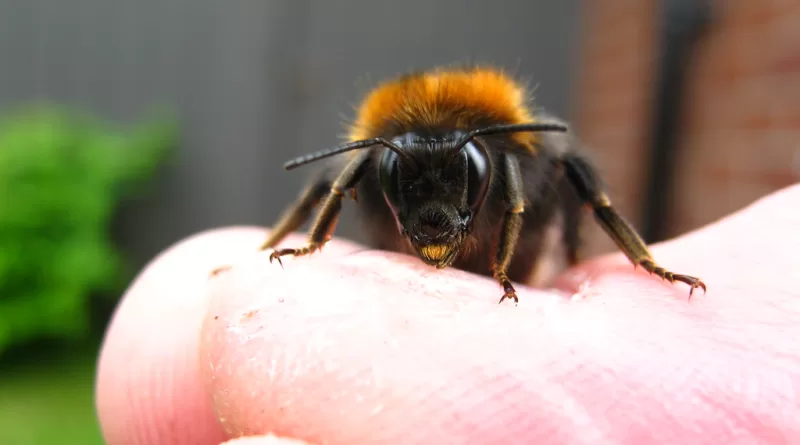Do bees have knees? Facts Behind Bees Knees
Do bees have knees? This is a question that has puzzled scientists for years. Some say that bees do not have knees because they do not need them to walk. Others believe that bees do have knees, but they are hidden from view because of their furry legs. Still, others believe that the knees of bees are so small that they cannot be seen with the naked eye. No one knows for sure what the answer is, but it is an interesting question to consider!
Uncovering the Mystery of Honey Bee Knees
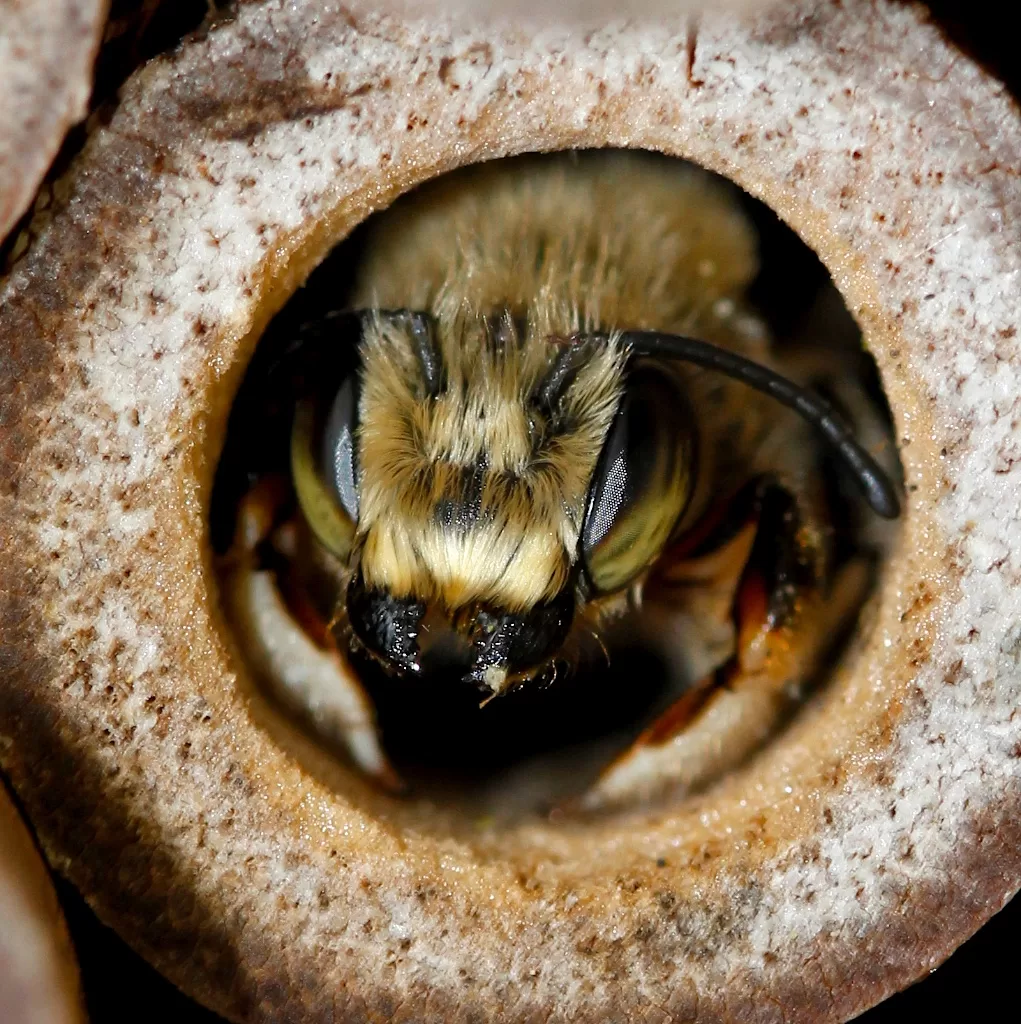
Recently, a team of biologists and entomologists have embarked on an intriguing quest; do bees really have knees? While the answer may seem simple at first, it turns out to be a rather complicated matter. In fact, not only do honey bees have knees, they have multiple knees! The most remarkable part is that these tiny creatures do not even need to use their knees in the same way we do. Unlike us, they do not require jointed appendages to walk or move around; instead, these specialized areas serve other purposes necessary for honey bee survival. Through further research and detailed observation of the insect’s physiology, scientists are uncovering exactly what mysterious jobs these so-called ‘knee joints’ are undertaking. Next time you observe a bee buzzing past, ponder all the tiny mysteries that humanity has yet to uncover about this fascinating creature.
Honey Bee Legs are Complex
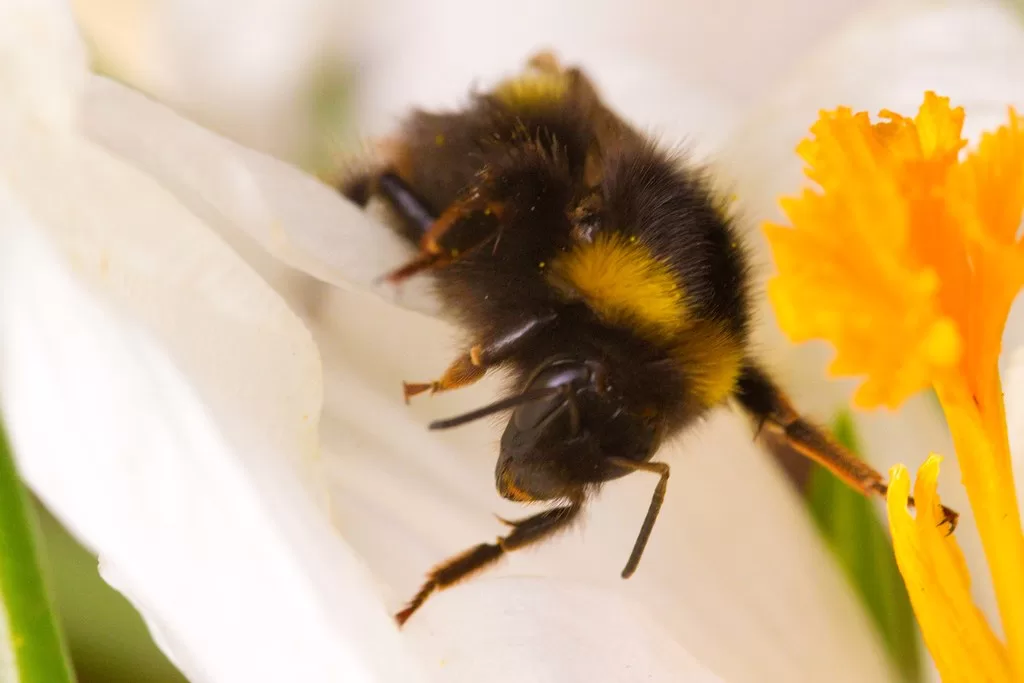
Honey bees have some of the most fascinating legs in the insect kingdom. Like many other insects, honey bees have three pairs of jointed legs: two front pairs and one back pair. However, what sets them apart is the extreme complexity of their leg structure. Honey bee legs do not have kneecaps as some other insects do, instead, they have a unique system of muscles that help them do everything from wiggling through tight spots to digging up nectar in flowers. The intricate leg structure also provides stability when it comes time to take flight. Truly, honey bee legs are complex wonders that enable these amazing creatures to thrive!
6 sections of a Honey Bee Leg
Bees do not have knees as humans do, but they do have six distinctly different sections on their legs. The first section, the coxa, is closest to the body and serves as a joint point to attach and control the leg’s limb. Then comes the trochanter and femur, which are both essential for providing strength and mobility in combination with being lightweight. The tibia is responsible for transferring signals from muscles to joints so that bees can move quickly and accurately when controlling their limbs. The tarsus provides stability when needed and its spines are used for grooming purposes. The last section of a bee’s leg is called the basitarsus; this has unique claws that allow them to cling firmly to surfaces. Along with helping to keep them mobile, these six sections give honeybees an array of abilities that help them day-to-day within their colonies or in flourishing forests.
Bee legs’ special functions

Many people do not realize that a bee’s legs do more than just carry them from place to place. They also have many special functions such as carrying pollen from flower to flower, grooming and cleaning themselves, collecting food, and performing intricate dances! But do bees have knees? Yes! Bees do have knees, although they aren’t easily visible – bees’ knees are located between the femur and tibia (the two larger segments at the back of their legs). This adjustable area gives the bee a stronger grip on flowers when it lands. The smooth surface of the knee allows for easy movement when the bee needs to take off again. So next time you admire a bee buzzing around outside, make sure to give a nod of appreciation for its incredible set of legs!
How does Bee Knee function?

Bee Knee is a method of understanding the complex relationships that exist between bees and their environment. Contrary to popular belief, do bees have knees? Yes! They do! It helps them to work the flower petals, pry apart nectar from pollen, and do other important activities for their hives. Essentially, Bee Knee is a tool or system for analyzing bee behavior and its critical role in pollination. Bee Knee helps us to better comprehend how these creatures rely on each other, our planet, and us – in many more ways than we may think.
In comparison to a Human Knee

Have you ever wondered if bees have knees? Unlike humans, their anatomies do not reflect a need for kneecaps, and much of the time their legs are tucked away under them, out of view. However, once examined more closely, do bees have knees is revealed to be a yes! In comparison to the complex joints within a human knee, bees do possess slight variation in the shape of their joint articulation; however, it does not possess any specific features that make them comparable to human knees. Instead of complicated structures like menisci or fibrocartilage discs, honeybee femurs connect with tibiae in simple hinge-type joints as do many other jointed lower arthropods.
Anatomy of Bee’s legs
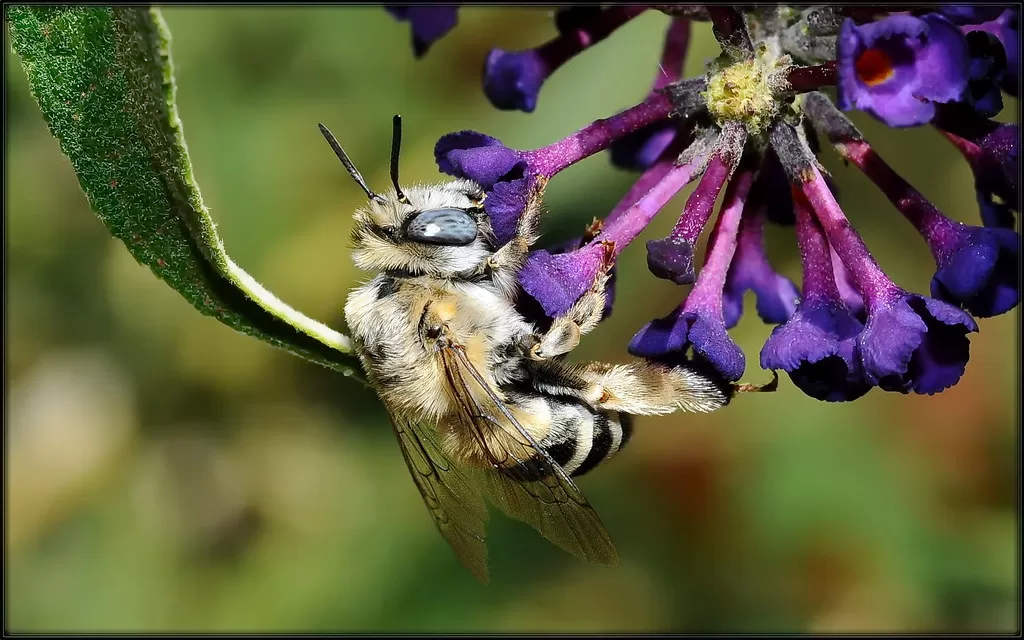
Did you know that bees have six legs? It’s fascinating to see how their anatomy comes together to allow them to do so much work. Each of the three pairs of legs is specialized for a purpose, and every bee has joints in its legs known as “knees”. While they may not be as complex as human knees, they do allow bees to manipulate objects, grasp onto other surfaces, and even walk upside down on ceilings. For many species of bee, the back pair of legs are also adapted into pollen-carrying baskets! It’s amazing how these tiny creatures use such detailed anatomy for everyday tasks.
Tell me the origin of the phrase Bee’s Knees.

The phrase “bee’s knees” has definitely been around for a while, with many different cultures each having its own speculation as to how it came to be. This expression is often used as a tongue-in-cheek way to describe something as “excellent” or “amazing”, but do bees actually have knees? Well, the truth is they don’t! The term more likely originated in the early twentieth century US, when referring to somebody or something small and insignificant. It was thought that if you were to refer to something as “the bee’s knees,” you were essentially implying that even a bee had a bigger impact than whatever you were talking about.
Bees Knees – A Catchy Phrase for a Time
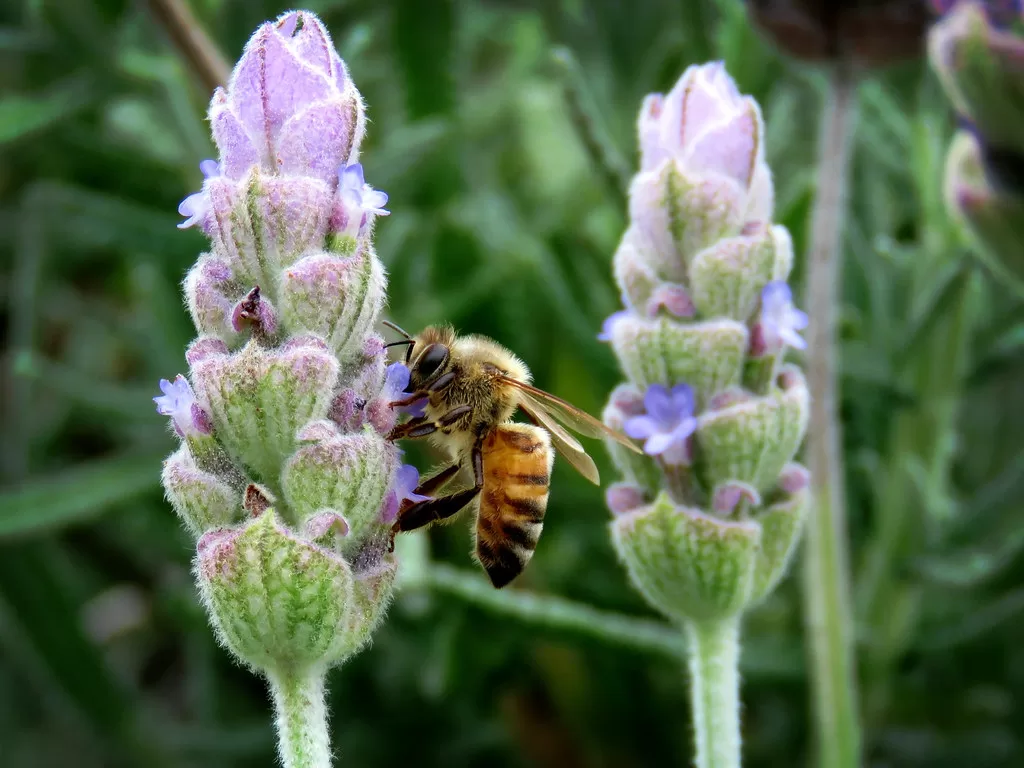
The phrase ‘bee’s knees’ is a favorite among many of us, but do you ever stop and question what it actually means? Believe it or not, the phrase originated back in the 1920s. It was a way for people to express embarrassment or annoyance without directly saying it out loud. These days, we use ‘the bee’s knees’ to describe someone or something as excellent and amazing. What’s also interesting about this phrase is that bees do not actually have knees! While ‘the bee’s knees’ is still often used with tongue-in-cheek humor, its popularity has never faded. Even today, nearly 100 years later, the phrase somehow seems relevant thanks to its catchy nature and timeless origin.
Where are Bee’s Knees?
For many of us, the phrase “bee’s knees” brings to mind images of something sweet and pure, but where do these mysterious knees even come from? Does a bee actually have any anatomical version of a knee or is there something deeper being referred to in this common phrase? The answer is complicated, as it turns out. While do not possess joints that are recognizable as knees by humans, bees do have what are called Flexor Tibiae Tibial Apodes which enable them to bend their legs at sharp angles and move freely. This ability gives them great agility when flying and gathering nectar from flowers, making bees one of the most important pollinators on our planet. In this way you could say that bees do have knees; it’s just that they are located higher up than we usually recognize!
Tell me the meaning of “Bees Knees”?
The phrase “bee’s knees” is an old-fashioned expression of approval that originated in the early 1900s as a way to say something is great or outstanding. The phrase originally had nothing to do with bees having actual knees, but rather referred to the best and most useful part of a thing – just like a bee’s legs are the most important part when it comes to gathering nectar and pollen. Therefore, when someone said something was the ‘bee’s knees’, they were essentially saying it was one of the best things out there. Nowadays, people still use this expression as an informal way of expressing approval or admiration toward someone or something.
Tell me the meaning of bee knees.

Bee’s knees is an idiom that is used to describe something that is exceptionally good or excellent. The phrase has been around since the early 1900s, but surprisingly much of its origin remains a mystery. Despite its name, do bees actually have knees? The answer is no – bees do not possess external joints like human knees. Though their structure is quite different from ours, they do have powerful flight muscles and small articulations that allow them to move in ways similar to our own limbs with flexibility and agility. What’s more, the term “bee-knees” only serves to illustrate how great something can be – after all, as we know, bees are capable of some incredible feats!
What are bee knees used for?
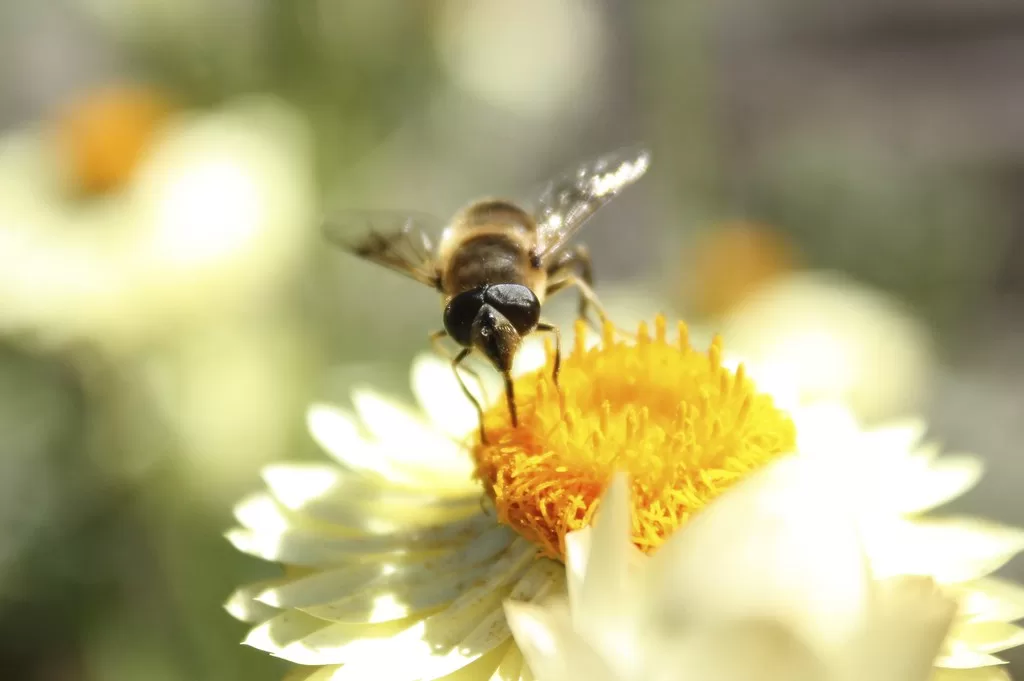
Believe it or not, do bees have knees? While perhaps a strange question, the answer is actually yes! Bees do indeed have knees. In fact, bee knees are used for a number of different tasks. One of the most crucial is gathering nectar and pollen from the mouths of flowers. This requires an incredible amount of dexterity and balance, so having flexible joints on their legs allows bees to do this work more easily and efficiently. Additionally, bee knees are also important for helping build their hives. Many species of bees secrete a special wax that they use to build cells within the hive; having flexible joints to do this intricate work helps them do it faster and with better consistency. All in all, bee knees may be one of the most overlooked yet important parts of a bee’s anatomy.
Tell me the definition of the knee.
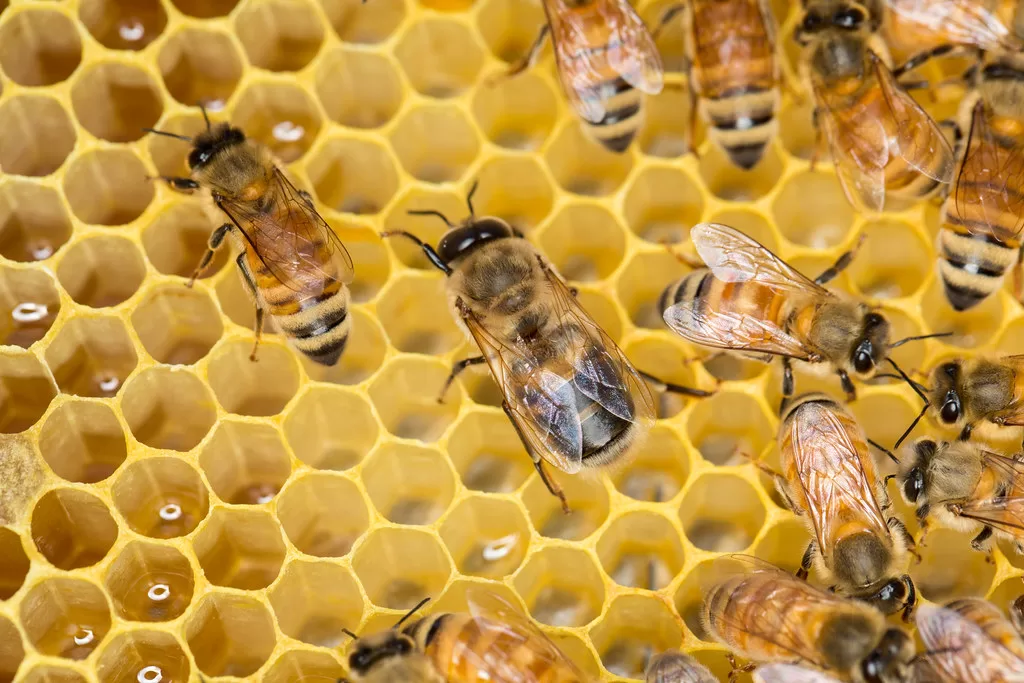
The knee is a commonly-used joint found in animals and humans. Its purpose is to allow movement and flexibility in the lower legs while providing stability. The knee is formed by the femur, tibia, patella, and fibula bones which connect together through tendons, ligaments, and muscles. The knee is capable of extending and flexing in order to allow a wide array of movements including jumping, running, climbing stairs, and walking. Despite its major role in our body’s mobility, it isn’t without its drawbacks like instability due to its large range of motion or injury from shin bone fractures. Contrary to popular belief bees do not have knees; their joints are instead made up of segments called trochanters which are found on their hind legs.
So bees really have knees!
When we think of animals with knees, human beings and other land-dwelling creatures come to mind. But do bees have knees? The surprising answer is yes; bees do in fact have “knees.” These specialized structures are actually part of the tiny set of leg joints near a bee’s abdomen that helps them differentiate the front and back end of the body while they fly or walk. Even more remarkable is how useful it is for bees to have access to this unique type of hardware, as it helps them climb up and down tall flowers as well as grasp particles for easier transportation. Without their knees, these important pollinators would be at a severe disadvantage!
Do bee knees have special functions?
As strange as it may sound, bees do actually have knees – or what could be considered a knee. Even though their legs do not bend the same way ours do, they are still able to bend in special areas called trochanter joints. It’s this joint that allows them to extend and retract their legs and helps them move quickly around the hive! These knees play an essential role in activities like carrying pollen from flower to flower as well as aiding in grooming and removing parasites from other bees in the hive. Next time you watch a bee buzzing by, see if you can spot its unique “knee” motion!
Do Bees have Knees?
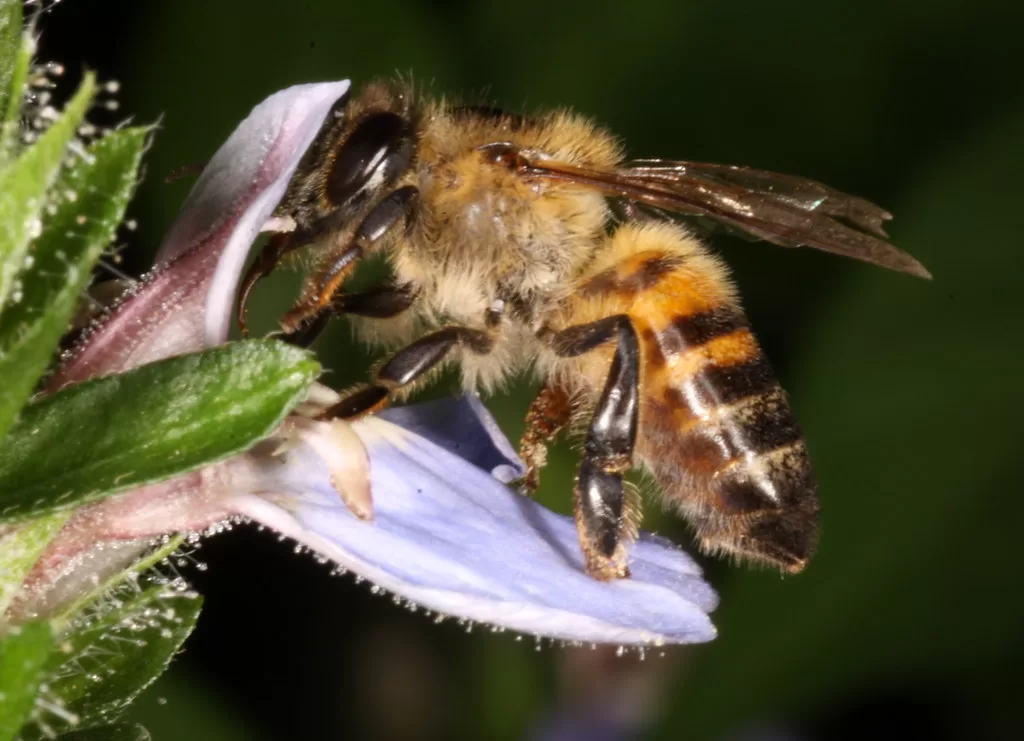
Our fascination with bees has caused us to delve into their anatomy, and while wings are certainly eye-catching, do bees have knees? The answer is surprisingly complex. Bees do technically possess knees and even “ankles,” albeit hidden by their thick fur – and researchers believe it could be contributing to their famed athleticism. While the bee’s jointed legs do not look like our human concept of ‘knees’, these appendages do serve an important purpose for the bee: giving them the ability to grip onto surfaces when they land and take off again. So if you’ve ever caught yourself wondering if the buzzing sound outside was a bee or something else entirely, keep in mind that it could be a single animal’s ‘knees’ that you hear!
Do bees have ankles?
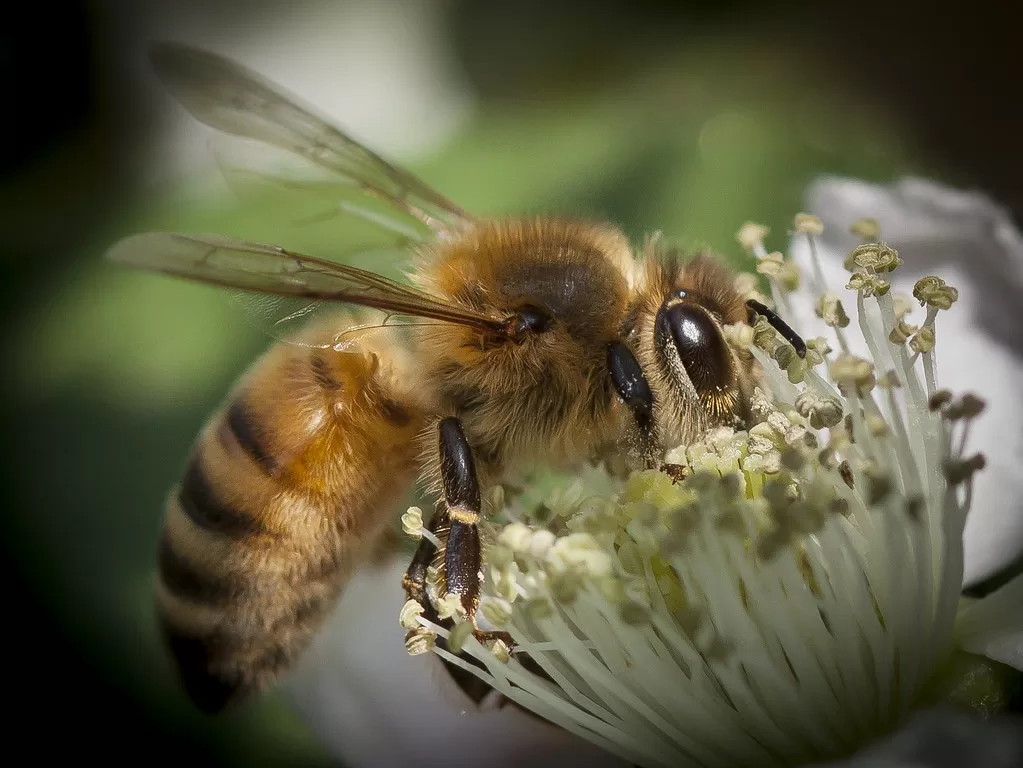
It’s a common misconception that bees have ankles; however, this is not the case. All insects, including bees, do not possess true ankles. Instead, what appears to be an ankle joint is actually the same hard exoskeleton found elsewhere on the insect’s body. This exoskeleton serves as protection from predators and has been specially adapted by hundreds of thousands of years of evolution to perfectly suit the needs of these important pollinators. Despite their lack of true ankles, bees are incredible creatures with highly specialized anatomy which ensures their tremendous success in a variety of natural habitats all over the world.
The parts of a bee’s leg
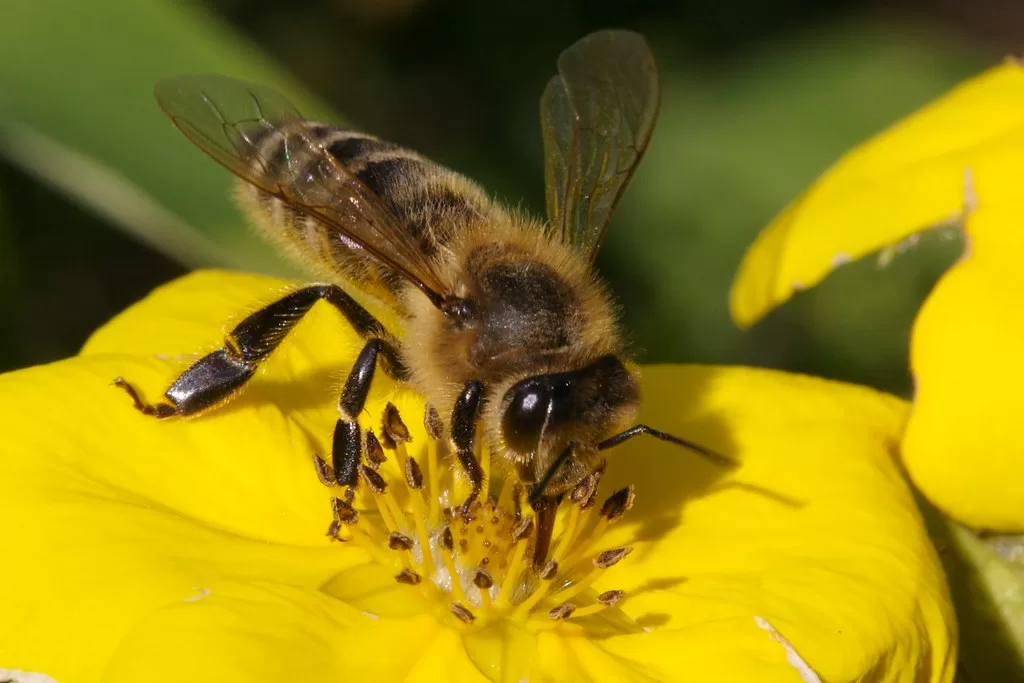
The legs of a bee are a marvel of evolution and organic design. The insect’s six segmented legs each have individual and collective responsibilities, together making them capable of remarkable feats. At the end of each leg are claws that allow the bee to cling and carry heavy loads while in flight. Complementing its claws is the brush-like fringe of hair on the legs, which grabs pollen from flowers as it collects nectar. This frosting-like coating sticks to the fur and helps feed its native hive once it departs from a flower’s embrace. Equally impressive are its protrusions for taste, feel, and smell which comes in handy for detecting potential food sources and communicating with other members of its colony. Truly, the parts of a bee’s leg hold great power!
Can bees fart?
Up until recently, nobody knew whether or not bees could fart. But now, some scientific evidence says that yes, they can! Bees have interestingly advanced digestive systems that allow them to intake and process pollen. Apparently, these same internal components allow them to produce the occasional stink too! It’s still unclear who identified bees’ ability to toot, but it definitely adds a new level of appreciation for our pollinating friends. As curious as this discovery may seem, it actually has important implications for understanding how Apis mellifera utilizes various food sources as fuel. All in all, this newfound gas knowledge adds a whole new dimension to bees and how they thrive in the wild!
What is a bee’s knee called?
Ever wondered what gives bees their impressive agility and dexterity? It’s in the knees! A bee’s knee is referred to as an ‘elbow joint’. This amazing appendage serves as a crucial example of insect adaptation; it allows the bee to rotate its tibia backward, allowing them to bend into any shape they need in order to access nectar-bearing flowers or build complex hives. This complex joint helps the bee tuck and fold its legs, even allowing the bee to hug the flower while taking nectar! By utilizing their elbow joint, bees are able to efficiently pollinate plants and provide us with honey and wax products – an absolutely essential part of life we often take for granted!
Tell me the structure of a bee.
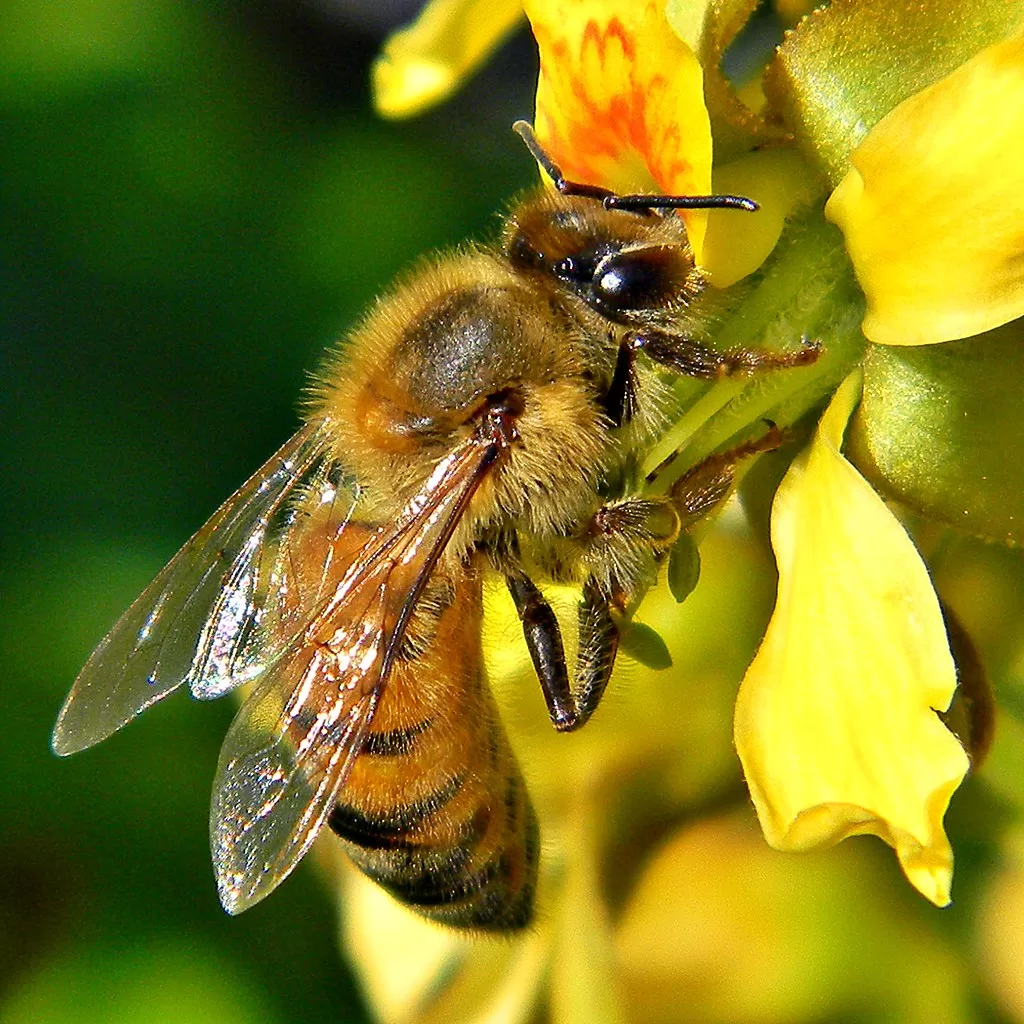
The structure of a bee can be an incredibly interesting topic to study. Bees are one of the most unique and fascinating creatures in our world. A bee’s body is composed of three segments: head, thorax, and abdomen. The head contains highly specialized organs called antennae which are used for smelling and tasting as well as large compound eyes that enable it to see in all directions. At the base of its head lies a tongue-like structure known as the proboscis that helps it collect nectar from flowers while its mandibles allow them to chew its food into small pieces.
While strategically placed on its thorax, its wings enable bees to fly long distances in order to collect pollen from flowers. Lastly, located at the end of its body is an organ called a sting which is mainly used for defense purposes. With such an interesting structure, bees are indeed incredible insects that play a crucial role in pollination which helps ensure life on Earth continues to thrive and flourish!
FAQs
Do any bees have knees?
Answer:
No, bees don’t have knees. They have a flexible joint in their thorax that allows them to move their wings up and down.
Why do we say the bee’s knees?
Answer: The phrase “the bee’s knees” was coined in the 1920s and means something that is excellent or superior.
The most popular theory about the origin of the phrase is that it originated from a 1918 song written by Con Conrad and Jimmy McHugh called “The Bumble Bee”. In the song, a bumble bee tries to impress a female bee by telling her that he knows how to do everything better than anyone else.
Do bumble bees have kneecaps?
Answer: No, they do not have kneecaps. The presence of kneecaps would be useful for bumble bees because it would give them more stability when they walk. However, since they don’t have kneecaps, they walk in a wobbly fashion and are thus more susceptible to being blown away by the wind.
How many elbows do bees have?
Answer:
Bees have four wings and six legs. Two of their legs are used as arms to hold and manipulate objects, which is where the term “elbow” comes from. The other four legs are used for walking or crawling.
Do bees have 6 or 8 legs?
Answer:
There are six legs on the thorax, and two legs on the abdomen. So, altogether, bees have eight legs.
How many kneecaps do bees have?
Answer: Bees have two kneecaps.
Why do we say bee’s knees?
Answer: The phrase “bee’s knees” is believed to have originated in the early 20th century, and was used as a slang term for something that was excellent or superb. Some say it may have come from the practice of beekeepers who would take the knee of their oldest and most experienced worker bees and rub it on new hives, as a way of blessing them.
Others believe that the phrase was derived from a corrupted version of an old English word “beezle”, which meant “to look closely at”. So, when something was described as being “the bee’s knees”, it meant that it was seen as the best option around.
Do bee’s knees bend?
Answer:
There is a lot of debate over whether or not the bees’ knees bend. Some people say that they do, while others maintain that they don’t. The answer to this question is still unknown. However, some scientists believe that if bees’ knees did bend, it would be due to the elasticity of their joint capsule and the honeycomb-like nature of their knee ligaments.
When did the bee’s knees become a saying?
Answer:
There’s no definitive answer to this question, but one theory is that the expression “the bee’s knees” originated in the 1920s when flappers (young women who wore short skirts and acted rebelliously) used it as a term of endearment for attractive men. Another possible explanation is that the phrase originated in America during World War I, when pilots would say that something was “the bee’s knees” if it were really impressive or cool.
What are ground-nesting bees?
Answer: Ground nesting bees are a fascinating yet overlooked type of bee. They create their nests in the ground, beneath tufts of grass or soil, depending on the species. What’s amazing about these insects is that they often work together to keep their underground homes tidy and safe from predators. Not only do ground-nesting bees provide essential pollination services, but they also help aerate and enrich the soil which encourages vegetation growth. While these bees may not look as eye-catching as other species, it can be both educational and enjoyable to observe these industrious critters at work.
Do bees have front and middle legs?
Answer: Bees are one of the most interesting small insects that humans know about. Not only do they play a vital role in pollination, but they also possess some impressive physical characteristics. For example, did you know that bees actually have front and middle legs that differ from their hind legs? These special legs help them harvest pollen and bring it back to their hives. They have a unique upper groove or corbicula in the middle of their lower legs which helps them transport this valuable fuel for life. To make this easier, bees also have sticky pads at the tips of their legs to collect even more pollen. It is truly amazing to consider that these tiny creatures with some pretty complicated leg anatomy manage to survive and thrive in nature!
What do bee pollen baskets do?
Answer: Bee pollen baskets are essential to the honeybee, providing a safe and efficient way for them to transport and store food. These important accessories are used to fill honeycomb cells with bee pollen, which bees use as a source of protein and carbohydrates. When a bee enters a flower garden, it collects pollen from flowers in the basket category on its hind legs before storing it in a pocket or pouch within the basket. Depending on the weight of the baskets they carry, bees can fly hundreds of miles each day in search of receptive flowers. The collected nectar is then mixed with saliva and enzymes that break down complex particles in order to create honeycombs; one of the most impressive feats of engineering found in nature!
How many bee species are there?
Answer: Scientists estimate that there are between 20,000 and 25,000 bee species around the world. These species range dramatically in size, shape, and color. While some of these pollinators can be seen easily with the naked eye, others exist either as microscopic creatures or within their own nooks and hideaways of a flower’s petals. Honey bees, bumblebees, carpenter bees, and sweat bees are some of the most well-known bee species to us humans but all of these different types- even solitary bee species- play an essential role in maintaining our planet’s fragile eco system. Sadly, many of them are facing extinction due to the destruction of their habitats by human activities. Researchers have recently identified 7 potentially new bee species living in Great Britain, demonstrating that the world still has secrets hidden within its little biological miracles!
What do bees do when their honey stomach is full?
Answer: Once the bee has filled its honey stomach, it will return to the hive and regurgitate the nectar into the mouths of other bees. These bees will then chew on the nectar to extract the honey and store it in their own honey stomachs.
What is a pollen press used for?
Answer: A pollen press is used to extract pollen from flowers. The pollen is then used in making food, cosmetics, or other products.
What are the functions of a bee’s hind legs?
Answer:
The bee’s hind legs have a number of important functions. First, they help the bee to fly. The hind legs are covered in long bristles that help the bee to generate lift as it flies.
Second, the hind legs help the bee to pollinate flowers. The bristles on the hind legs collect pollen from flowers, which the bee then transfers to other flowers while pollinating them.
Third, the hind legs play a role in communication. Bees use their hind legs to communicate with other bees by tapping them together or drumming them on surfaces. This communication can be used to relay information about food sources or danger signals.
More Articles:
Do Bumble Bees Sting? And What You Can Do About It
Do Bees Fly in the Dark? Can Bees See In The Dark?
How Many Eyes Does a Bee Have? The Fascinating World of Bees

